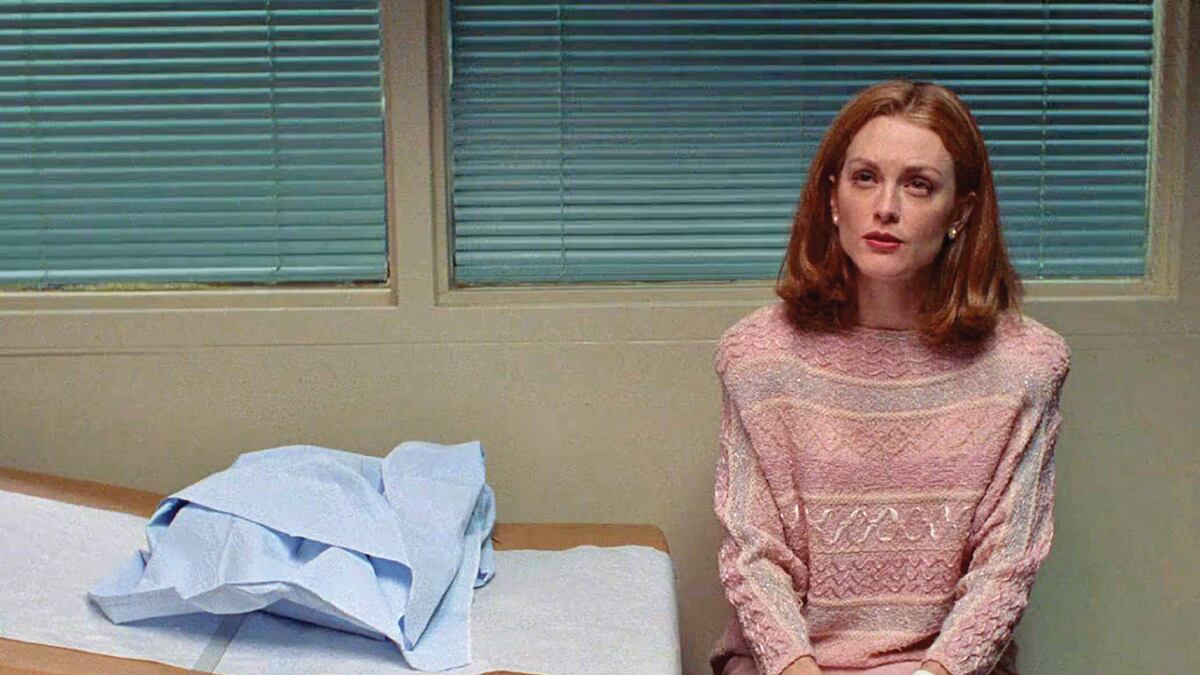Three months ago, for obvious reasons, the movie world briefly obsessed over Steven Soderbergh's Contagion. Numerous outlets reported how the 2011 docu-realist thriller became a video on demand hit and the ideal cinematic document for a pandemic's terrifying first crescendo.
But now it's June. It feels like five years have passed, and no COVID-19 chart, study or test has curbed America's other endemic diseases. If anything, they've intertwined. A virus erroneously dubbed "the great equalizer" has been found to disproportionately affect and kill Black Americans due to societal disadvantages. Far more jarringly, police violence against Black Americans didn't slow down even during a pandemic, as the killings of George Floyd, Breonna Taylor and Ahmaud Arbery transformed a world in lockdown into one filled with mass protests.
The pandemic's third month demands a different kind of film about sickness. Enter Todd Haynes' Safe, where quarantine is a privilege and a mysterious malady's most devastating symptom is the inability to see one's own place in the disease's creation.
Haynes, one of Portland's most notable filmmakers, wasn't yet a Portlander when he made Safe in 1995. Coming off his 1991 feature debut, Poison, the burgeoning New York auteur was clearly interested in contagions both medical and metaphorical, and had gathered enough cachet to attract a soon-to-be movie star in Julianne Moore.
Safe chronicles the deterioration of a San Fernando Valley homemaker named Carol White (not nearly as charming as Haynes' next Carol). Suffering panic attacks, rashes and seizures, Carol develops what she believes to be "environmental illness," or a heightened allergic state to chemicals ranging from freeway exhaust to cologne. Though the film is set in 1987, Carol's declining health drives her to all manner of recognizable 2020 activities. She masks up, distances from others and eventually flees the city entirely, spending the movie's last act in a Southwestern desert commune.
Voted the best film of the '90s in a Village Voice poll, Safe finds its greatest strength in skewering suburban fear and malaise while never short-selling the staggering pain of Moore's performance. Carol is both beneficiary and victim of her wealthy, white bubble that turns into a literal white bubble of isolation by the film's end. While she lives quite comfortably in a gated mansion on her husband's real estate fortune, her near-lethal condition is also perpetually underestimated and disbelieved by loved ones and doctors alike.
Twenty-five years after its release, viewers can choose a litany of avenues in interpreting the social critique of Safe. Certainly, white privilege and fragility leap to the foreground right now. For God's sake, the protagonist's name is Carol White, and her chosen tonic (before giving up dairy) is a pint glass of milk. It's tough to say whether she's more horrified by black couches or her stepson's fearmongering school report on Los Angeles gangs creeping toward her precious suburb. There's even a conspicuous police interaction when Carol wanders her front lawn in a midnight stupor, but never mind, the officer just wants to make sure she's all right. As much as hair spray, she's allergic to the mass production of an exclusionary American ideal she hoped would keep her, well, safe.
Perhaps the most remarkable facet of Safe in 2020 is how unsentimental it is toward self-care or therapy as a solution to Carol's illness. Once she retreats to the New Mexico commune, a nuanced but revealing counseling scene depicts the pressure Carol faces to simply blame her condition on an absence of self-love.
But it's mere minutes before Haynes closes his film by illustrating the emptiness of navel-gazing. "I love you," Carol recites to a mirror inside her quarantine hut in a tone so feeble it's almost a question.
We can immediately imagine a movie after the movie: If Carol's hermetically sealed igloo is still too close to real life for her sinuses and skin to clear up, she could escape to the North Pole next, or maybe the moon. She has the resources to continue fleeing the social contract and endless hours to plumb an empty soul. It's a tragicomic masterstroke that she won't connect those two dots.
